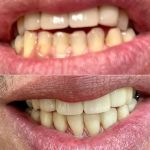1. Importance of Your First Dental Cleaning
Your first dental cleaning marks an essential step toward maintaining a healthy smile and preventing oral diseases. It provides a professional assessment of your oral health and helps establish a baseline for future dental care. Many patients feel anxious before this initial visit, but understanding what to expect during your first dental cleaning can ease concerns and prepare you for a positive experience.
Regular dental cleanings remove plaque buildup that brushing alone cannot eliminate. This reduces the risk of cavities, gum disease, and bad breath. Your first cleaning appointment also allows your dental team to educate you about effective oral hygiene practices tailored to your unique needs.
2. Initial Examination and Oral Health Assessment
The first step during your dental cleaning appointment is a thorough oral examination. The dentist or hygienist will inspect your teeth, gums, tongue, and mouth for any signs of decay, gum disease, or other issues. This assessment often includes digital X-rays to identify problems not visible to the naked eye.
This stage helps the dental team understand your oral health status and decide on the best cleaning approach. It’s also a great opportunity for you to discuss any discomfort, dental history, or questions you might have, ensuring a personalized care plan.
3. Plaque and Tartar Removal Process
One of the core parts of your first dental cleaning is the removal of plaque and tartar. Using specialized tools, the hygienist carefully scrapes away hardened deposits from your teeth and beneath the gumline. This procedure, known as scaling, can sometimes cause minor discomfort but is crucial for preventing gum inflammation and tooth decay.
The hygienist will focus on trouble spots and may spend more time on areas where plaque has accumulated excessively. Though the process may feel unfamiliar at first, it is painless for most patients and essential for maintaining healthy gums and teeth.
4. Teeth Polishing and Fluoride Treatment
After scaling, your teeth will be polished using a gritty toothpaste and a rotating brush. This step smooths the tooth surfaces, making it harder for plaque to stick and enhancing the brightness of your smile. The polishing can produce a tickling sensation but is generally well tolerated.
Many dental cleanings conclude with a fluoride treatment. Fluoride strengthens enamel and helps protect your teeth from future decay. This treatment is quick and painless, often applied as a gel or foam that you hold in your mouth for a minute or two.
5. Common Sensations and How to Manage Them
It’s normal to experience some sensitivity or mild soreness after your first dental cleaning, especially if it’s been a while since your last visit. Areas around the gums may feel tender, and some patients notice increased tooth sensitivity to hot or cold foods.
To manage discomfort, your dentist may recommend using a sensitive toothpaste or avoiding very hot or cold beverages for a short period. Drinking plenty of water and maintaining gentle brushing habits can also help soothe your mouth as it heals.
6. Post-Cleaning Care and Preventive Tips
Following your first dental cleaning, it’s important to continue practicing good oral hygiene at home. Brushing twice daily with fluoride toothpaste, flossing regularly, and limiting sugary snacks support the work done during your cleaning.
Scheduling regular cleanings every six months allows your dental team to monitor your oral health and prevent issues from progressing. Additionally, adopting a balanced diet and avoiding tobacco products contribute to long-term dental wellness.
7. Personal Stories and Expert Advice to Enhance Your First Cleaning Experience
Many patients share that their first dental cleaning was less intimidating than expected once they understood the process. For example, Emily, a 27-year-old patient, recalled how communicating her sensitivity concerns helped her hygienist adjust techniques to ensure comfort. Her proactive approach transformed her dental visits into positive experiences.
Experts emphasize the importance of asking questions and discussing any anxieties with your dental provider. This open communication fosters trust and allows tailored care, making your first cleaning a foundation for lifelong oral health.
For more information and personalized dental care services, visit Dentistry Toothtruth to find expert advice and the right dental solutions to support your oral health journey.







 Aspen Dental - Glendale, AZ4.0 (602 review)
Aspen Dental - Glendale, AZ4.0 (602 review) Millennium Dental Arts5.0 (235 review)
Millennium Dental Arts5.0 (235 review) Abbey Dental, Inc.4.0 (19 review)
Abbey Dental, Inc.4.0 (19 review) Juan Carrillo, DMD4.0 (334 review)
Juan Carrillo, DMD4.0 (334 review) Sapphire Family Dental (Dr. Amy Chi, Dr. Emily Allen & Dr. Steven Rzepecki)4.0 (208 review)
Sapphire Family Dental (Dr. Amy Chi, Dr. Emily Allen & Dr. Steven Rzepecki)4.0 (208 review) TK Dental Wayne, NJ | General, Cosmetic, Restorative Dentists. Dental Implants, Crowns, Bridges | Tatyana Kaminar DDS4.0 (139 review)
TK Dental Wayne, NJ | General, Cosmetic, Restorative Dentists. Dental Implants, Crowns, Bridges | Tatyana Kaminar DDS4.0 (139 review) The Importance of Oral Health Education During Pregnancy for a Healthy Pregnancy
The Importance of Oral Health Education During Pregnancy for a Healthy Pregnancy Best Tips for Brushing Your Teeth Properly for Healthy Gums: Essential Techniques for Oral Health
Best Tips for Brushing Your Teeth Properly for Healthy Gums: Essential Techniques for Oral Health Why Skipping Dental Checkups Can Lead to Bigger Oral Health Problems
Why Skipping Dental Checkups Can Lead to Bigger Oral Health Problems Advantages of Porcelain Dental Restorations
Advantages of Porcelain Dental Restorations How Can Diabetes Cause Tooth and Gum Problems? Preventing and Managing Oral Health Issues
How Can Diabetes Cause Tooth and Gum Problems? Preventing and Managing Oral Health Issues Healthy Habits for Promoting Good Oral Health and Hygiene: Tips for a Healthy Smile
Healthy Habits for Promoting Good Oral Health and Hygiene: Tips for a Healthy Smile